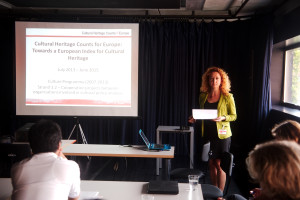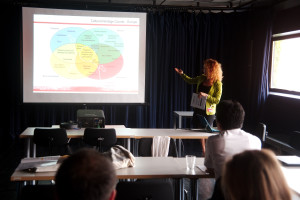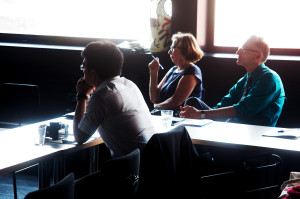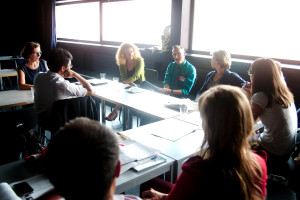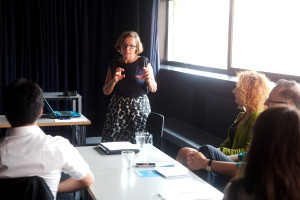 On 19 September in Brno, Czech Republic, CHCFE project partner ENCATC, organized a seminar “Does cultural heritage count for Europe?” Organised in the framework of the 22nd ENCATC Annual Conference, this seminar was led by Claire Giraud-Labalte, chair of the ENCATC Thematic Area “Understanding Heritage” and member of the CHCFE Steering Committee.
On 19 September in Brno, Czech Republic, CHCFE project partner ENCATC, organized a seminar “Does cultural heritage count for Europe?” Organised in the framework of the 22nd ENCATC Annual Conference, this seminar was led by Claire Giraud-Labalte, chair of the ENCATC Thematic Area “Understanding Heritage” and member of the CHCFE Steering Committee.
Staying in theme of the ENCATC Annual Conference topic of “New Challenges for the Arts and Culture: Is it just about money” this gathering was an excellent opportunity to share information, research and examples responding to challenges in the heritage sector and having an important impact on cultural heritage in Europe. To set the context, the seminar began with a short presentation by Claire Giraud-Labalte who gave a brief introduction to ENCATC’s Thematic Area “Understanding Heritage”, the Cultural Heritage Counts for Europe project, and an overview of important policy developments such as the European Communication on Cultural Heritage adopted on 22 July 2014.
In attendance were members of the ENCATC Thematic Areas “Understanding Heritage” and “Museums in Europe” as well as researchers, academics and heritage operators from Belgium, France, Italy, the Philippines, Poland, Serbia, Spain, and Switzerland. Invited speakers included David Vuillaume from the Network of European Museum Organisations (NEMO) and Joanna Sanetra-Szeliga, ENCATC member and representative of the Cultural Heritage Counts for Europe project.
Joanna Sanetra-Szeliga, Cultural Manager and Researcher, International Cultural Centre in Poland is a member of the research team for the Cultural Heritage Counts for Europe. In her presentation of the project, she gave reasons for this project – the first of its kind to map the multiple benefits of European cultural heritage – and early research findings. She also explained some of the challenges encountered as the research teams have been working to collect and analyse existing evidence on the benefits of cultural heritage. Since museums are also part of Europe’s rich cultural heritage, David Vuillaume, Director of the Swiss Museums Association and board member of NEMO, was invited to present several interesting studies about the impact of museums in Europe carried out and produced by members of NEMO.
Providing strong evidence of cultural heritage’s impacts is crucial to influence policy makers, public and private authorities and society at large on the benefits of supporting and financing heritage in Europe. Heritage is not always perceived as a structural element but it is a unique resource in our society. “Heritage manifests the human genius and is a living testament to the history and creativity of our society through the centuries. Today it is a unique source of inspiration. Both moveable and immovable heritage reflects such diverse expressions of local life that together weave the fabric of the history of Europe. What’s more, it characterizes the identity of Europe in its diversity compared to other areas of the world. This is one of the major dimensions driving international audiences to discover our rich and concentrated cultural heritage,” said Claire-Giraud-Labalte.
Thanks to the presentations from invited experts and the lively debates that followed, seminar participants left better informed about studies conducted on the impacts of cultural heritage. They also left Brno with new reflections on how to use this evidence in multiple areas such as education, research, policy development, sponsorship, etc. Finally, it was clear that the topic of the seminar corresponds to a real need in the sector to have more evidence of the impacts of cultural heritage, information about heritage projects and activities, and international and European exchange ideas with other heritage stakeholders around Europe and beyond.

